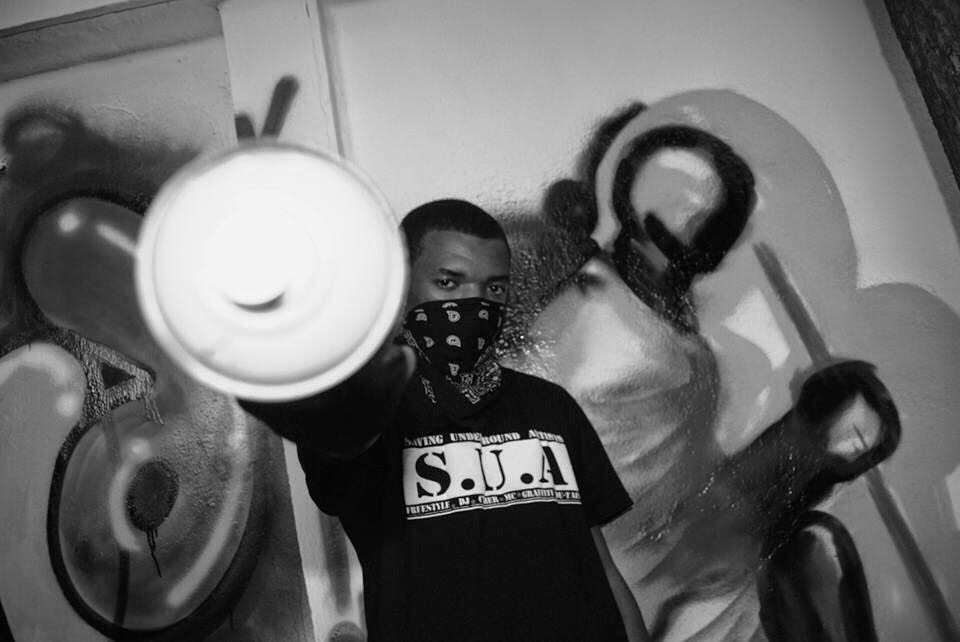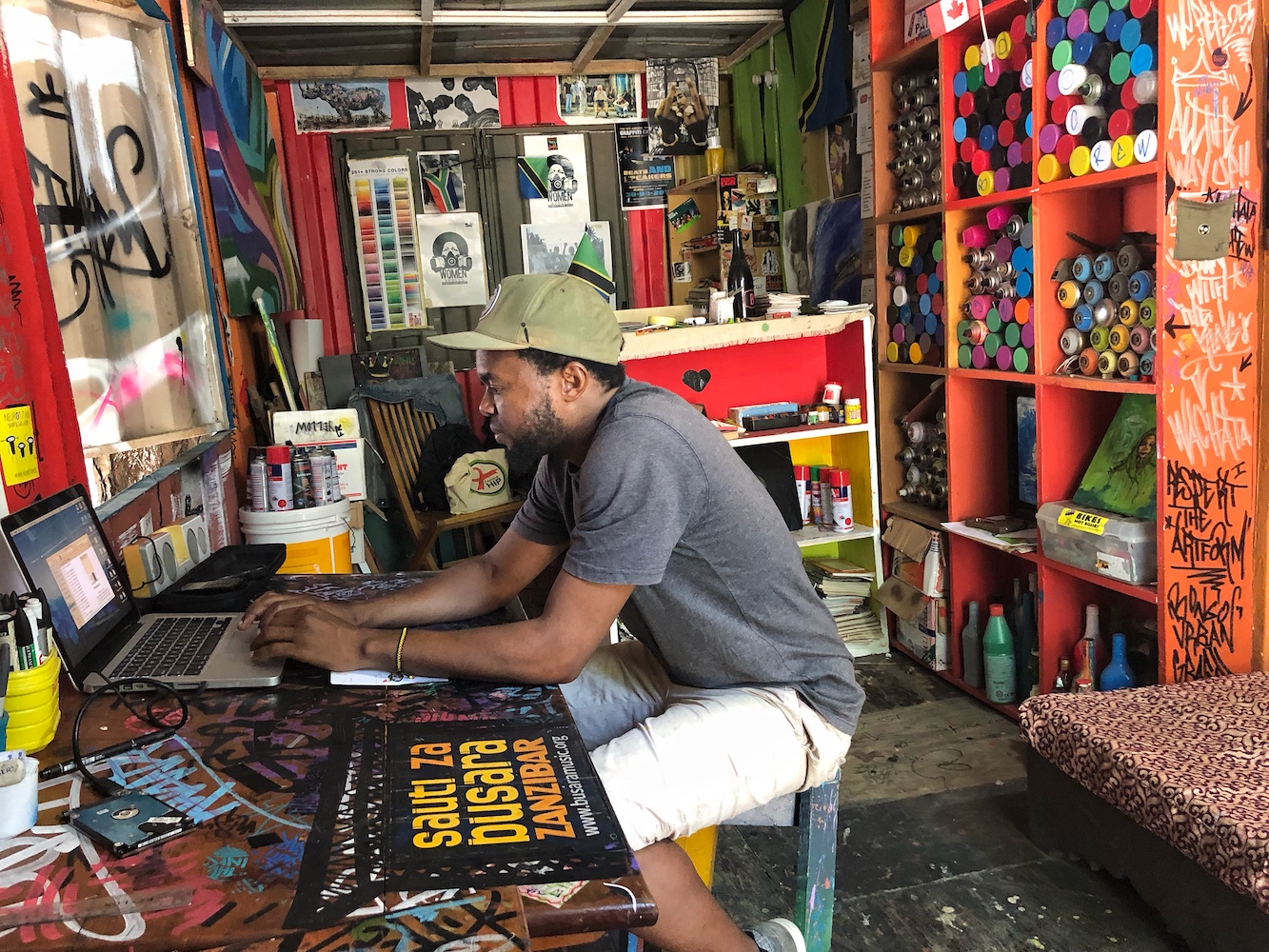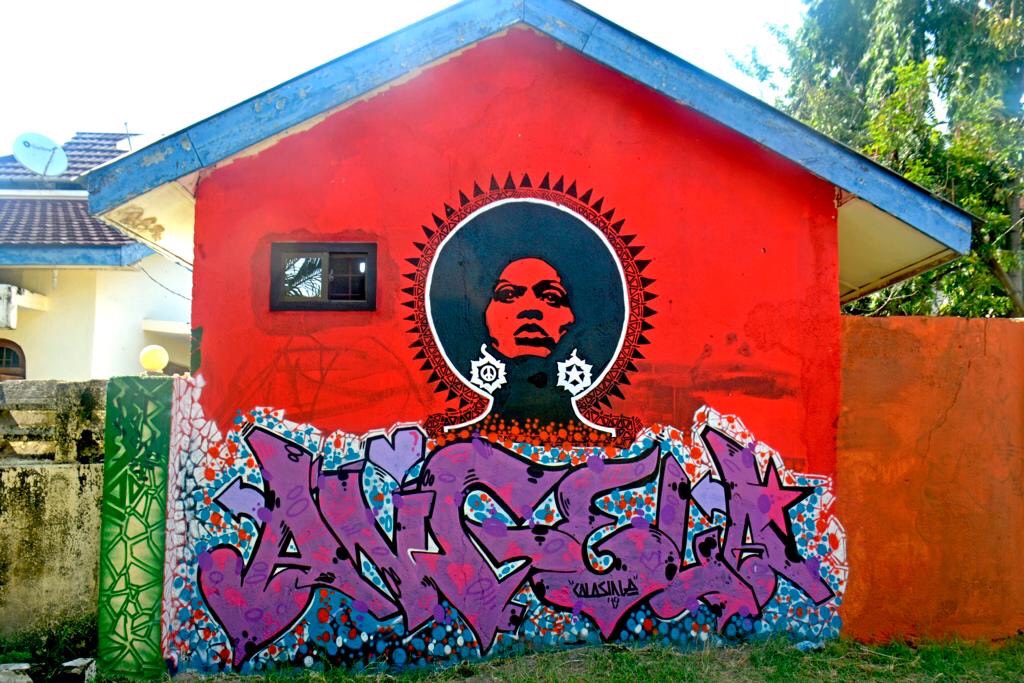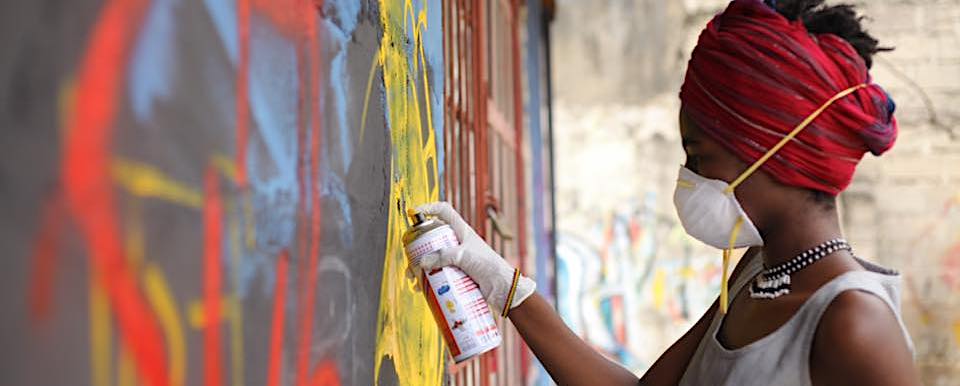STREET ART: Engaging the Youth in Tanzania’s Metropolis
Dive into Dar es Salaam's Graffiti and Hip Hop scene with Valerie Amani, as she speaks to artist Kalasinga on the importance of forging a niche for creativity within his community and culture.

There is a rhythm that is present in most cities, a street culture that maintains a silent beat connecting bus stations to people, to the symphony of rush hour traffic. Street art and art about the street is more than just photos of people and spray paint tags on walls, it is a living, breathing urban culture that is forever transforming. Dar es salaam, is no exception, with over 4 million hustlers and bustlers, with the youth at the core - a vibrant street culture has emerged and with it a plethora of new age creativity in an otherwise conservative culture.
Graffiti, amongst older traditional generations has unfortunately had a bad reputation, with communities associating it to laziness, vandalism and rebellion. This is why Dar es Salaam's Wachata crew ¹ decided they would make it their mission to educate and empower young street artists to do it the right way - expressively, yet legally, and most of all with a love for art.
Wachata is Tanzania's most prominent Hip Hop and Graffiti crew, having headquarters in one of the countries leading contemporary art centers. Now consisting of 4 members, Mejah, Local Fanatics, Medy, & Kalasinga ², who I sat down with to find out a bit more on how street art became a part of his life and why street art culture is such a vital part of inspiring and engaging the youth.

Valerie: How did you get into graffiti?
Kalasinga: I started drawing in primary school. I was good at it, so much so the teacher used to ask me to draw images on the chalkboard. Even some students asked me to draw pictures for them in their books, but eventually I couldn’t keep up drawing for everybody. I decided to start charging them per drawing (he laughs). In secondary school (high school), a group of us that enjoyed drawing would get together and exchange ideas and drawings in our separate sketch pads - and sometimes we would even be asked to create sign boards and artwork for events and people. From then on I started watching a TV show in 2007 called WaPi (Words and Pictures) featuring poets, rappers and street artists. That's when I really became drawn to street art.

Valerie: So when your love of street art was growing, how supportive were your parents?
Kalasinga: My parents were very suspicious of street culture or local “hip hop” culture as a whole. I remember I used to record hip hop songs on cassette tapes, and play them on the radio in secret. Sometimes I would record over my mom's cassette tapes and she would find them and tell me that this kind of music “ruins the radio”. It was funny to me because she listened to Taarab music (popular East African music) and I wondered why her music didn’t “ruin the radio” too. I guess street culture was associated with negative things - they always wanted me to be reading and studying instead of listening to rap.
Valerie: And how did rap play a role in your journey towards street art?
Kalasinga: Well, I used to have small rap battles with my brothers at home. We loved it - we would write our own lyrics and try to be the best. I realised that although I had great lyrics, my flow wasn’t the best (he smiles). When I got a bit older, I started attending the WaPi events live, that brought together all these artists once a month. Most people there wanted to be MC’s, you know, rapping was popular. And so I asked myself - if everyone wants to be a musician, what can I do to be different? I tried out breakdancing and many other things, but I still found the most connection to graffiti. I ended up picking up an empty notebook someone had dropped and used it as a way to practice my drawings and write my thoughts. I also started paying more attention to graffiti in Hollywood movies - if I saw graffiti in a scene, I would pause it, study the art and try to replicate it.

Valerie: Is this around the time you joined Wachata crew?
Kalasinga: I only joined Wachata after attending many workshops at WaPi led by Mejah and Local. Mejah was the first person I spoke to about joining. I had mostly only drawn in my book and had little practice on walls. I used to look to him for mentorship and also observed my brothers as they used charcoal and silver paint to draw on walls - because this is what was easily available. Wachata became more official after getting a HQ [headquarters] at Nafasi Art Space; after this I thought of ways to improve visibility and offered them social media as a way to share their work with more people. After this, I felt like I had a role to play and was officially a member of Wachata.
Valerie: How do you think street art has shaped your life and others?
Kalasinga: Well, street art connects people. When you go out to do a public art mural you meet people, you talk to people - people feel good around the work and take pictures. It really made me feel like I was making a difference when we were able to stop illegal street art through educating younger artists about respecting people's property. I think street art can be powerful without breaking rules.

I even drew a piece on the wall outside my house and people always stop there, admire it - it brightens up the street. Someone might be having a bad day and they see the art and it could cheer them up, encourage them or just make them smile. It brings me joy because it's accessible to everyone and, I think for most street artists, this sharing brings you a sense of purpose.
__ __ __ __ __ __ __ __
Women are also a welcomed part of street culture, something that Wachata also tries to promote by hosting occasional women-only graffiti events titled Women Xpress. Naitwa Salma, a street artist, MC and poetess used this platform to expand her skills and she continues to spread love through the femme positive messages she leaves through her street art and words .

Andrew Munuwa, also a Graffiti artist that has worked with Wachata, said that spending time on the street inspired him to start documenting the vibrancy and heart of it through photography. Through his eyes we are able to catch young skateboarders mid air at the bus stand, to notice the joy in the faces of the bikers, to freeze time and appreciate the joy that transcends culture and place.

Art about the street is as important as street art, as it captures moments of exchange, vulnerability and love in an urban community that, without a second glance, one might mistake for just modern chaos. For many young Tanzanians, the street is the home. It is the birthplace of freedom of expression, a safe space where everyone can equally create and, most importantly, belong.
The original interview was in Swahili, then translated INto English by the author.
NOTES:
1. To find out more about Wachata and the origin of the name, go to their page.
2. Street/Artist names
Valerie Amani is a fashion designer and visual artist based in Dar es Salaam, Tanzania with a passion for writing. She is currently the Visual Art Program manager at Nafasi Art Space, one of the leading contemporary art platform in the country, while designing for her fashion brand Kahvarah. She uses digital platforms to share her art and writing and is currently working on developing a program that will educate and support young female artists in Tanzania.
Instagram: @ardonaxela